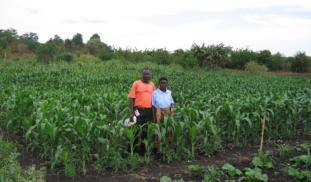Please wait...
About This Project
Ninety percent of Malawi does not have access to improved sanitation. 90% of the people also work in agriculture. Small scale farmers comprise more than half of Malawi's population and have limited access to both sanitation and fertilizer. This project aims to assess the ability of composting toilets to provide farmers in northern Malawi with both toilets and a sustainable source of essential soil nutrients.
More Lab Notes From This Project

Browse Other Projects on Experiment
Related Projects
Using eDNA to examine protected California species in streams at Hastings Reserve
Hastings Reserve is home to three streams that provide critical habitat for sensitive native species. Through...
City smart: Are cities making birds smarter?
One cannot go to Florida and miss the White Ibises roaming golf, park and private lawns. But how does a...
How do polar bears stay healthy on the world's worst diet?
Polar bears survive almost entirely on seal fat. Yet unlike humans who eat high-fat diets, polar bears never...


